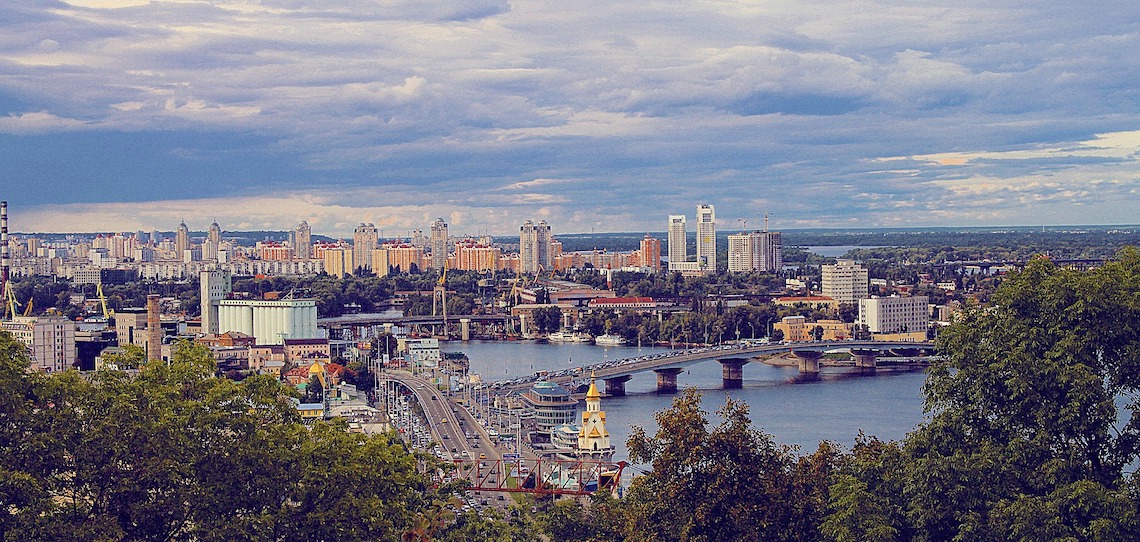The Russian invasion of Ukraine had an immediate impact on the fashion industries in both nations. Ukrainian designers were forced to flee their homes and many global brands pulled all of their operations in Russia.
Ukrainian designer Anna Osmekhina, founder of the brand TTSWTRS, which specializes in leggings and bodysuits, is one of many who was forced to flee her home. Now living in Poland, she’s in the process of uprooting her entire 9-year-old business and transplanting it to a new country. The complicated process is something many Ukrainian designers are currently dealing with. It both speaks to the resilience of Ukrainian fashion and spotlights what Ukraine’s fashion industry truly needs from its international counterparts: material help and not just sympathetic Instagram posts.
Osmekhina has been living in Poland since March, but it wasn’t until April that she began the process of moving her business. Most of March was spent on the immediate necessity of getting out of Kyiv and going through the complex process of seeking asylum in another country. Osmekhina said her two main business concerns thus far have been finding a headquarters and moving inventory to a new warehouse.
For the former, Osmekhina said she is hoping to set up a new home office for the brand in Gdańsk, Poland. But relocating without a full team is difficult, she said. Of her 20 employees, many of her team members are still in TTSWTRS’ former home of Kyiv. Poland has taken in more than 2 million Ukrainian refugees since the invasion began, but the process of leaving the country is difficult and dangerous.
“It is heartbreaking that our team has fallen apart,” Osmekhina said. “We are all in different places at the moment. Since relocation takes so long, we will probably have to miss one fashion season.”
Thankfully, Osmekhina said she was able to get much of the brand’s inventory out of Ukraine, but it has remained stuck in Polish customs for the last three weeks. The wave of refugees fleeing from Ukraine has caused congestion at import sites throughout the region, like Constanta in Romania and the port city of Gdańsk.
Osmekhina said it’s hard to guess at this point how much the total cost of relocation will be, but the strain on her company’s budget will be considerable.
Ad position: web_incontent_pos1
“Ukrainian designers need money for relocating their businesses, as it is terribly expensive and almost impossible for many,” she said. “All Ukrainian brands are at risk of closing down, as the cost of relocation is too high. It requires buying new equipment and new fabric. It’s not like you can ask the members of your team to just pack up the materials and send them to you from Kyiv with bombs falling from the sky.”
Osmekhina and other Ukrainian designers all echoed the idea that Ukraine and its fashion industry need more than just slogans. “Concrete actions,” as Osmekhina put it, are what Ukraine’s fashion industry needs to survive.
Ksenia Schnaider is another Ukrainian designer working to relocate her eponymous luxury brand. She’s currently in Nuremberg, Germany, but her 30-person team is split between several countries. Some are still in Ukraine, while others fled to Poland. Schnaider said that, at first, she was disappointed with the international response from the fashion industry.
“I was shocked how [the fashion industry] ignored such a horrible war in the center of Europe,” Schnaider said. “But now it seems they’ve finally realized that one of the biggest countries in Europe — it’s only a two-hour flight to Paris from Kyiv — is in danger and people are suffering.”
Projects like Angel for Fashion, an American e-commerce site facilitating sales from 36 different Ukrainian designers, have been lifelines for Ukrainian brands. Angel for Fashion launched at the beginning of April, but founder Jen Sidary said it’s already received orders from over 70 different countries, 70% of which have already been shipped.
Ad position: web_incontent_pos2
According to Sidary, coordinating aid to Ukraine is difficult for people outside of the country, but it’s of vital importance. Like TTSWTRS, many brands in Ukraine have products tied up in inaccessible warehouses and team members in multiple countries and timezones. Shipments through Angel for Fashion could take up to six months, though so far, most have been completed far quicker.
“I’ve been working 17-hour days to connect with all the designers in Ukraine while I’m in Los Angeles,” Sidary said. “But I’m so impressed by the brands’ speed [in fulfilling orders] considering the horrific war on Ukraine.”
Sidary is heading to Europe next month to help close the time gap between herself and the designers she’s working with, as well as to promote the website in Europe throughout the summer.
Osmekhina is confident that, once the war is over, the Ukrainian fashion renaissance that began in the late 2010s will continue. For that to happen, Ukrainian designers need support from the fashion industry outside of Ukraine to weather the toughest period of their existence.
“Some people talk about their willingness to help, but soon it becomes clear that what they truly want is to benefit from it in some way,” Osmekhina said. “It hurts, because right now, we need support more than ever. I am full of hope in TTSWTRS, in Ukrainian designers and in our talent, but we are desperate for support and funding.”




